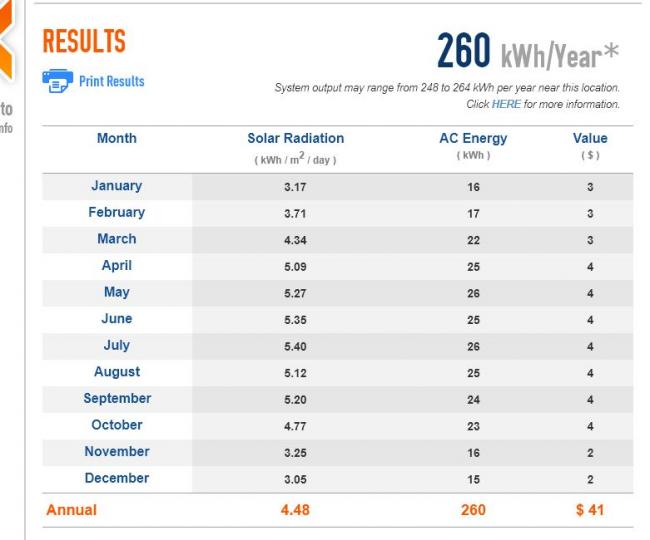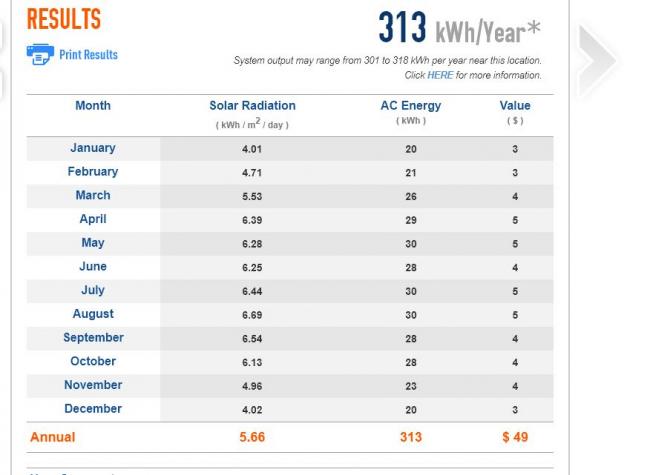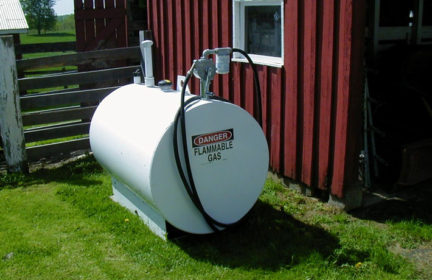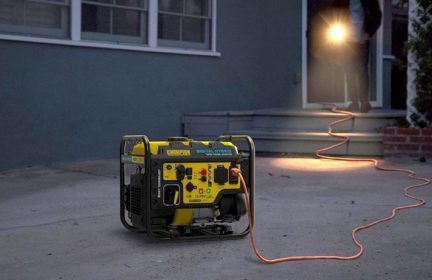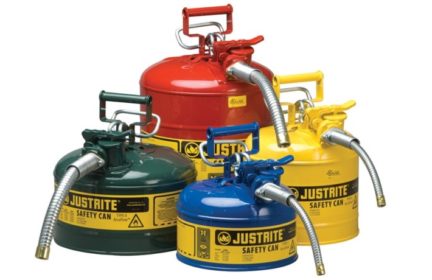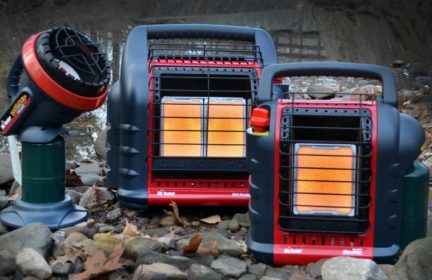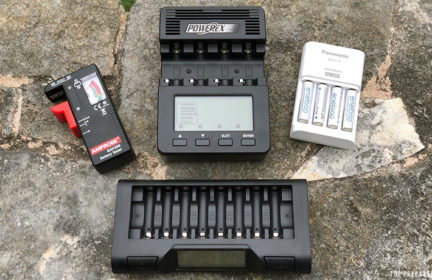Generators?
I’ve been trying to get my head around generators. (Disclaimer: I am almost entirely ignorant abut electricity and am not very handy).
The immediate need that’s driving my need for a generator is that I need an off-the-grid backup for running my CPAP machine. For those of you who don’t know about CPAP, it treats sleep apnea. No CPAP no good sleep. That’s bad in an emergency. My CPAP machine is rather power hungry and I’ll have to buy a sizeable capacity lithium battery to run it for one night. But then I will need to recharge it. As I understand the best way to recharge it is with a generator. But here’s where I get stuck.
A generator seems tricky and dangerous.
* It can’t run inside. It has to be 20 feet away from the house but my outside property is very small and also on a hill and also exposed so that the generator could be easily seen and and maybe stolen outside. Even if not stolen I don’t know where I would place it to be 20 feet away from the house and how I would keep it secure on a slope.
* It requires gas or propane, which also has to be stored outside, also somewhat visible and possibly easily stolen and also explosive. Do I want to keep an explosive gas right near my house? How do I store it safely? I already have this problem with the little propane canisters I keep for my camping stove. I’ve opted to store those in my basement, which I’m not supposed to do technically, because I don’t know where else to put them safely.
* And if I’m camping (which is my secondary reason to want an off-grid solution for my CPAP) do I bring a bunch of gas or propane with me on my camping trip to feed the generator?
I also don’t know how long a generator takes to recharge a battery to capacity.
I would really appreciate guidance from someone who is competent about generators.
-
Best Replies
Jesse Smith Jonnie Pekelny - June 12, 2020
OK, so let’s do 48 watts x 8.5 hours, because honestly it stresses me out a bit that you might not be getting enough sleep.
I’m definitely not an expert, but here’s what I come up with. For watt-hours we multiply the wattage x duration in hours 48 x 8.5 = 408 watt-hours. Let’s assume that you want to cover the entire annual load with a solar system. So 365 days x 408 watt-hrs/day = 148,920 watt-hours, but let’s divide by 1000 to arrive at 149 kWh. So you’ll use about 149 kWh per year.
Solar: Assuming decent exposure and somewhere in the lower 48, a single watt of solar will generally produce between 1.1-1.3 kWh annually. Using PVWatts to model solar output in Arcata CA (because it’s the only place I know in Northern CA), we get ~1.3 kWh per Watt of solar (I used a 45 degree tilt, all else defaults in pvwatts including due southern exposure). So let’s divide our 149 kWh demand by 1.3 kWh output to get necessary solar capacity 149/1.3= 115 watts of solar. So theoretically 115 watts of solar will cover the entire annual load.
Storage: You can’t pull the plug just yet! Monthly output varies a lot, increasing by ~70% from winter to summer. So we need to think a bit about storage. Donna’s suggestion for looking into Goal Zero is good, but your CPAP is actually a bit of an energy hog, so smaller power stations will be inadequate. Two easy options. 1. We can add extra solar with a smallish battery and hope that your outage doesn’t coincide with very poor solar output. This is probably the cheapest option. December is Arcata’s worst month for solar, but 200 watts of solar still produce an average of 0.5 kWh per day, which is more than enough to cover the load. In this case the Goal Zero Yeti 400 Lithium should be sufficient (428Wh) for a 3 day outage and really bad solar production, and is around $600. Going up to the $1200 GZ Yeti 1000 Lithium would be more conservative (1045 Wh). The option to charge either of these from a vehicle in a pinch is sort of nice. Worth pointing out that there are other offerings in the world of power stations on amazon, some of which are considerably less expensive than the Goal Zero brand.
IMO portable generators might be a little bit of a pain, especially if you intend to go camping. If you do opt for a portable generator make certain to have carbon monoxide detectors with a back-up battery. Carbon monoxide poisoning will ruin your whole day!
-
Comments (33)
-
Donna Weaver - June 12, 2020
Hello Jonnie, I am not an expert but am also looking into this question of generators for earthquake preparedness. Have you considered solar generators? You would need somewhere to deploy a couple of solar panels to recharge. I understand that many people keep their cpaps running this way when camping or off grid. You might take a look at GoalZero.com to get an idea I’d what is available. No gas, no fumes, no noise.
-
Jonnie PekelnyContributor - June 12, 2020
Hi, Donna. I am talking exactly about how to recharge that kind of “solar generator.” They’re not really generators at all but basically batteries. They need to be recharged. From what I’ve seen recharging them in one day with solar is unrealistic (although again, I am very far from being an expert.) So, that brings me back to the idea of a generator to recharge them.
-
Donna Weaver - June 12, 2020
Yes! There is actually an article on this site that goes into this subject. Have you checked it out? https://theprepared.com/?s=jackery
Good luck!
-
-
Jesse Smith - June 12, 2020
Can you post specs for the CPAP machine? What duration of outage or camping trip do you anticipate? Is this car camping or remote? Do you have any other basis to want a household back-up power system? For small, short duration energy requirements, a battery that’s intermittently charged via grid or vehicle might be sufficient. If you’re concerned about sustained outages/duration then adding solar to this might be a good next step.
-
Jonnie PekelnyContributor - June 12, 2020
Hi, Jesse. Which specs do you need? I have a Respironics System One. I am in the process of measuring daily power usage with my two most frequently used masks. (One mask needs somewhat higher heat so I anticipate will use more power). The higher heat mask uses an average of 48 watts per hour, times maybe 7 hours. In a few more days I’ll have the numbers for the mask that needs less heat.
My number one priority is to have my CPAP during power outages. The most common source of power outages here (in Northern California) is that our local power company PG&E has been turning off the electricity for several days at a time during power season. Last year most outages lasted between 1-3 days and there were two or three of them but it’s unpredictable and quite chaotic. However, I also want to be prepared for that 2 week outage as part of the shelter in place prepping in case of a major disaster when most services will go out.
Second priority is camping. If it happens it will definitely be car camping and may last 2-4 days I imagine.
A general household backup power system would be lovely but I’ve recently been checking out getting solar panels and battery installed in my house and it’s too expensive for me at this point. I am low income and installed batteries aren’t cheap. So, I am going to my plan B, which is to try to rig up something for my CPAP and then have a couple of portable solar panels to power my cell phone and a few other small devices. The big thing that leaves out is my fridge and free-standing freezer, but oh, well. CPAP is more important.
-
Open Space - June 12, 2020
If you have never used a portable generator, you should know they are LOUD! Most campgrounds have quiet hours and wont let you run them at night. You wont want to sleep anywhere near it either. So you definitely want a battery system you can recharge during the day.
If this is the only load, just about any small gas powered generator should be able to charge it. The 20 feet distance from the house is overly conservative in my opinion (it probably has all kinds of worst case assumptions built in) – I ran a generator on my back porch for 2 weeks after a hurricane. Just make sure you don’t have any open windows near it, and don’t run it when you are not home (in case it somehow catches on fire). DO NOT try to connect it to your house wiring unless you are very certain of you skills.
You might also be able to charge the battery with your car in a pinch – but expect it to take a few hours.
-
Jesse Smith - June 12, 2020
OK, so let’s do 48 watts x 8.5 hours, because honestly it stresses me out a bit that you might not be getting enough sleep.
I’m definitely not an expert, but here’s what I come up with. For watt-hours we multiply the wattage x duration in hours 48 x 8.5 = 408 watt-hours. Let’s assume that you want to cover the entire annual load with a solar system. So 365 days x 408 watt-hrs/day = 148,920 watt-hours, but let’s divide by 1000 to arrive at 149 kWh. So you’ll use about 149 kWh per year.
Solar: Assuming decent exposure and somewhere in the lower 48, a single watt of solar will generally produce between 1.1-1.3 kWh annually. Using PVWatts to model solar output in Arcata CA (because it’s the only place I know in Northern CA), we get ~1.3 kWh per Watt of solar (I used a 45 degree tilt, all else defaults in pvwatts including due southern exposure). So let’s divide our 149 kWh demand by 1.3 kWh output to get necessary solar capacity 149/1.3= 115 watts of solar. So theoretically 115 watts of solar will cover the entire annual load.
Storage: You can’t pull the plug just yet! Monthly output varies a lot, increasing by ~70% from winter to summer. So we need to think a bit about storage. Donna’s suggestion for looking into Goal Zero is good, but your CPAP is actually a bit of an energy hog, so smaller power stations will be inadequate. Two easy options. 1. We can add extra solar with a smallish battery and hope that your outage doesn’t coincide with very poor solar output. This is probably the cheapest option. December is Arcata’s worst month for solar, but 200 watts of solar still produce an average of 0.5 kWh per day, which is more than enough to cover the load. In this case the Goal Zero Yeti 400 Lithium should be sufficient (428Wh) for a 3 day outage and really bad solar production, and is around $600. Going up to the $1200 GZ Yeti 1000 Lithium would be more conservative (1045 Wh). The option to charge either of these from a vehicle in a pinch is sort of nice. Worth pointing out that there are other offerings in the world of power stations on amazon, some of which are considerably less expensive than the Goal Zero brand.
IMO portable generators might be a little bit of a pain, especially if you intend to go camping. If you do opt for a portable generator make certain to have carbon monoxide detectors with a back-up battery. Carbon monoxide poisoning will ruin your whole day!
-
Jonnie PekelnyContributor - June 17, 2020
Thanks for all that, Jesse. Just to dumb it down even further — because I really am at a baby, baby level of understanding of electrical and off grid… Are you saying that the best solution is to get a lithium battery with more storage (e.g. 1000 watts) so that it can go for a number of days even if the sun conditions for recharging are bad? So, hopefully, if it can hold me on the CPAP for three nights then somewhere within those three days there will be adequate sunlight to recharge?
Or, the cheaper solution would be to get a battery with less capacity and powerful solar panels so that when there’s sunlight it’ll recharge quickly?
How would the first scenario work if a power outage happens in the rainy season? Yes, the 1000 can hold more, but what if there are no clear, sunny days within the three day period? Do the solar panels work on overcast days? Is there some alternative off-grid power source I can use? I don’t quite understand how breaking the power requirements over a year helps in this case since the battery would have to be recharged every three days or so, not sometime on some sunny day later that year.
-
Jesse Smith - June 17, 2020
Exactly! The cost of solar panels is insanely low. You’ll likely be able to find 100 watt panels for around $100 ($1/watt). on amazon.
Battery tech is rapidly improving and simultaneously declining in price, but it’s still the weak component of the system. Power stations are great because they combine a bunch of functions into one package. Battery, solar charge controller, and inverter all together.
You could assemble all of these from scratch and emerge with a less expensive system. You’d need 2 x 100 amp-hour SLA batteries to roughly match the capacity of the Yeti 1000 (the numbers might look like they don’t square up, but you shouldn’t discharge sla nearly as much as lithium). You could probably snag an inverter for $100 or so. Renogy has starter kit + 100 watt panel for $162, and you can add attach a total of 400 watts to this kit. I’d buy another 100 watt panel out of the gate. Cost breakdown would be roughly:
Inverter – $100
Renogy starter kit with charge controller: $162
100 watt additional panel: $110
2 x 100 ah batteries: $360
So all in the cost of this setup would probably be <$800. More work, and the batteries would be inferior to the lithium in the Yeti, but still a decent system.
Re – weather and light. This is tricky, and I don’t know exactly where you are so I’m partly guessing. You can check out your exact location in pvwatts via the link in my 2nd reply. Solar output has a lot of seasonal variation, but doesn’t fall to 0. Using Arcata CA, the worst month for output is December (see screenshot). But 200 watts of solar still produces an average of 500 watt/hours per day during December. And remember, you only need around 400 watt/hours per day for the bigger CPAP machine, and more like 320 for the smaller one. The solar output will vary a bit day-to-day, but it’s pretty likely that a 200 watt solar system will be sufficient for you to ride out virtually anything, at least as far as the CPAP is concerned.
Also, let’s suppose that the anonymous internet idiot who gave you this advice is dead wrong, what then? The reality is that you can just drop another $200 on 200 more watts of solar, plug it into the system, and you’re good to go.
One thing to make really clear – not all controllers or power stations will be set up to effectively handle any capacity of solar system. As a general rule I think that you – and preppers generally – should start out with infrastructure capable of handling at least 400 watts of solar, which will generally be sufficient to run refrigerator, lights, and device charging.
-
Jonnie PekelnyContributor - June 17, 2020
I went to the https://pvwatts.nrel.gov/pvwatts.php site, but honestly I have no idea what I’m looking at there. I’m in Oakland.
By the way, has anybody else had trouble getting a hold of anyone at Goal Zero? I wrote in to them with some questions and got no response. Tried calling and no one ever picked up the phone. That’s not encouraging from the standpoint of tech support if I buy their products.
-
Jesse Smith - June 17, 2020
If it would be helpful I could do some quick mark-ups on the input screens at PVWatts. I work in a bunch of sim software for various things on buildings and most are pretty easy once you get the hang of them, and insanely useful. Here’s the same 200 watt solar system in Oakland. Oakland has about the best conditions for solar, so I can’t imagine you get much rain.
-
Jonnie PekelnyContributor - June 18, 2020
Sure. That would be great. Thank you. If it’s helpful I can send you my address (but would prefer to do that privately). We do get a fair amount of rain in Oakland on a good winter, but there are also a lot of sunny days.
-
Jesse Smith - June 18, 2020
Assuming you can face the panels south without any obstructions at 45 degree angle then exact address won’t matter much.
-
Jonnie PekelnyContributor - June 18, 2020
What is the advantage of buying the (more expensive) Yeti when there are other lithium power stations on the market that are significantly cheaper? (For example this, which I just found: https://deepdiscounteddeals.co/products/1000w-solar-powered-portable-charger-camping-inverter-generator?utm_medium=cpc&utm_source=google&utm_campaign=Google%20Shopping or other better known names like the Jackery on Amazon). I guess GoalZero has a good reputation, but I’m a little bit afraid to commit to them since they’ve been so very bad at responding to me. Also, I’m low income. But a lithium battery does sound like a more practical choice to the heavy, heavy acid version. I mean, how much would a 1000 watt acid battery weigh?
-
Jesse Smith - June 18, 2020
I mentioned this in an earlier post, “Worth pointing out that there are other offerings in the world of power stations on amazon, some of which are considerably less expensive than the Goal Zero brand.”
The power station at the link stores 444 watt-hours. This is super important!!! This means it’s almost directly comparable to the smaller of the two GZ generators. So the savings would be ~$130, and not $700. Watt-hours are a unit of energy, watts are a unit of power.
The way that I think of a lot of this stuff is in terms of numerators and denominators. Mostly the numerators are $, and the denominators are the units (watts of solar, watt-hours, btus or heat or cool, sound transmission class points, cfm, etc). Identify a clear unit, figure out how much of that unit you need, then drive the cost of the unit down.
Re – sla batteries – it might even be a bit worse than this. A common rule of thumb is that sla shouldn’t be discharged >50% or so. So you need nearly double the amp-hour capacity rating. If you’re on a serious budget you might save a bit going with sla, but if you can spring for it lithium is better.
-
Jonnie PekelnyContributor - June 14, 2020
The lower heat mask is about 40 watts per hour.
-
Jesse Smith - June 16, 2020
So you could reduce those numbers by about 20% or so, which doesn’t have much impact on system sizing. Essentially 100-200 watts of solar + power station meets your CPAP demand.
A top-freezer Energy Star rated fridge will often consume <200 kWh/year of energy. Alternatively, an efficient, camper style fridge would probably be < 100 kWh/year. If you were to run a fridge, CPAP, device charging, and a small number of efficient lights, you would probably ultimately need 400 watts of solar and a power station capable of handling it. So the Yeti 1000 or equivalent would work well. Does this work for your budget?
-
-
Watermelon Samurai - June 17, 2020
Jonnie,
I live in hurricane-prone Florida, and I have a generator for when we lose power. Since it gets warm & stuffy in the house without A/C, I wanted a quiet way to run an oscillating fan at night. That seems like a similar situation to what you want to do with your CPAP machine.
I use a car battery, and an automotive-style DC-to-AC converter to power the fan. It runs the fan all night without a problem, and can last 2-3 days on a charge. During the day, I recharge the battery from my generator while the generator is also powering the fridge.
It’s a pretty easy setup. The converter has spring-loaded clips that clamp onto the battery terminals, so it’s easy to attach & remove. Honda makes a small, fuel efficient & reasonably quiet portable generator (model 2200i) which can charge a 12V car battery directly. It has the same spring-loaded clips, so charging the battery is as simple as unclipping it from the DC-to-AC converter and clipping it to the generator.
The battery is heavy & I do have to carry it outside to where the generator is. That’s the only negative. But the generator weighs about the same, and I have to bring that in at night anyway. So lifting is unavoidable.
Just another option for you…
-WS
-
Jonnie PekelnyContributor - June 18, 2020
WS, what does your generator run on? How do you store the fuel safely? And where do you run it when necessary?
-
Watermelon Samurai - June 18, 2020
The generator uses gasoline, and 5 gallons lasts for about two days (running it a couple hours in the mornings and evenings). I store gas in 5 gallon gas containers in the garage in the opposite corner from the water heater. That’s not ideal, but it’s my only option. As long as the rubber gaskets in the container cap are in good condition, and the cap is tightened down tightly, you won’t have a problem with fumes escaping.
When I need to run the generator, I move it to the back of the house where I can keep an eye on it. I bring the generator back inside at night.
-
Jesse Smith - June 18, 2020
Are power outages frequent in your area? 2200 watts should turn on a window AC unit (probably 2) simultaneously with the fridge. IME a single room of cooling is a pretty substantial comfort improvement in an outage.
-
Watermelon Samurai - June 18, 2020
Despite it’s name, it’s only an 1800W generator (1800W continuous, 2200W peak). It might be able to run a small window A/C unit, but not at the same time as another appliance. The momentary high current draw when the compressor motor starts will trip the breaker in the generator.
-
-
Jonnie PekelnyContributor - June 20, 2020
Being a neophyte as far as electrical knowledge is concerned, I just found out something basic that has me confused. I’d been counting watts as total amount of energy used, but now I’ve learned that they’re actually the rate at which it’s used — e.g. like speed. Which means I might have calculated my CPAP usage wrong. What I should be counting is watt hours, I guess, for the actual amount my CPAP uses. But what I don’t understand is how to then to interpret the battery ratings, which are usually in watts not watt hours (although some are both). Why would a battery specify 1000 watts if that only tells you how fast you’re going, not how much juice you have available? Can somebody straighten me out on this please?
-
Jesse Smith - June 20, 2020
That’s a very common source of confusion, for sure! You gave the CPAP specs in watts, which I converted to watt-hours based on 8.5 hours of runtime/day. This assumes that the CPAP stays on at a constant power rate for the runtime. If the CPAP cycles on and off, this might overstate your energy demands. If you want to get super accurate, you could plug it into a kill-a-watt monitor to see how many watt-hours it uses per day. Many public libraries have these.
Both wattage (power) and watt-hours (energy) are important considerations in the design of back-up power systems. As Watermelon Samurai mentions above, compressors and fan motors in air conditioners and refrigerators have a momentary surge when starting, so that their power requirements (wattage) can be really high (often double the running). A very important sidebar to this is don’t oversize your air conditioner if you want to connect it to a back-up power source!!!!!! A very large number of air conditioners will use less energy annually than your CPAP, but require >7kw of power to start, which is a serious pain. I still suspect that Watermelon Samurai could simultaneously run an efficient fridge and window AC with a 2200 watt surge capacity generator. I haven’t measured window unit startup amperage and haven’t found specs on them, but the running watts tend to hover around 0.1/btu, which means a 1/2 ton unit will run at about 600 watts. Doubling this for startup gives us 1200 watts, which still leaves 1000 watts of capacity for other stuff.
Power stations generally provide watt-hour specs, albeit with less transparency than I would like. Just be careful to look for these and don’t get them confused with battery wattage, which is way less of a concern in your case. If you want to build a system with batteries from scratch it gets a little more complicated.
-
-
FPV California - June 20, 2020
Running a c-pap off grid is a solved problem with an off-the-shelf solution. I was looking for a way to keep my family’s electronic devices charged for an upcoming camping trip and found that the portable power stations look like a good solution. According to the reviews a lot of people need to power their c-pap machines off grid and it sounds like these people are happy with the solution.
The one I bought is from a company called Jackery. It was only $110 but I went for low cost and portability. The nice thing is they also sell matching solar panels that go with their line of power stations.
Since your use is for a critical application I would go with a little more power capability. My model is rated to 100w and 160wh, and it uses a modified sine wave inverter. Take a look at their bigger units with more power, more storage, and pure sine inverters.
Although I haven’t really put it to the test yet, I can come back in about two weeks to say how my power station worked out. -
XKPin - June 21, 2020
Okay, there’s lots of GREAT info from others, but here is my 2-cents. I retired as the Superintendent of the Public Utilities in Hampton Roads and bought a lot of portable and stationary generator sets. I own two. A 5kw and a 2200w. There are many terms for generators but there are really two basic types of AC generators: Inverters and ‘all others.’ I chose the more expensive Honda EU2200i inverter for the following reasons, and maybe an answer to your concerns:
1. Quiet. An inverter genset does not have to run at max rpm. Non-inverter gensets (like my Coleman 5KW set) need to maintain their set RPM (1800-rpm for a 4-pole unit, 3600-rpm for a 2-pole unit) to keep the cycles per second (ie 60-hz needed for AC). There may come a time when I may not want anyone to hear me when I’m filling my water containers from my well or powering my 15.5-cu ft freezer. At 48dBs @ 1/4 load (freezer compressor cycled off or the well is not running); and a potential max noise level of 57-dBs at full rated load its quiet. It’s also an acceptable noise level for National Parks. Note the disclaimer on many gensets indicating they do not need to have a noise rating so they don’t offer one. Well they are right, it’s not a required rating for portable gensets unless you’re in a Park with noise limitations!
2. GREAT fuel consumption – I figure I’ll get well water and freezer operations for many months on a few gallons of gasoline. I run my well, my 15.5-cu ft freezer and a few lights with little effort on the EU220i. Over the years I’ve found that many gensets burn a lot of fuel just WAITING for an electrical appliance to be turned ON. They waste a lot of fuel without a load! Now understand, the EU2200i is too small to run your RV air conditioner.
3. Experience. Most of the people we hired were paid, we’ll marginally, and many did not respect the equipment. I actually saw a Honda 2000 fall off the back of one of our trucks, picked up and used to control the traffic work zone lighting for 14-hours as we excavated a broken water main. They never quit under the most adversarial emergency conditions.
4. I purchased more than 14 of these portable units with little down time for repairs despite excessive abuse and miserable environmental exposure. That’s why I purchased mine.
5. The unit is easily portable by a 67-year old and stuffed inside my popup or any of my vehicles for a bugout (read on).
6. The unit has a setting to restrict the fuel and empty the carb before it shuts down. When it cools down the fuel filler cap can be CLOSED so that fuel vapors do not escape into the vehicle or storage area. I store this in my mud room – no fumes!
7. Lots of warnings about where to run the genset – and of course, the better you follow the safety requirements the safer you will be. The EU2200i is multi speed. RPMs increase as the load increases. It runs only as fast or as loud as the loads demand. We live in the sticks and power failures are routine – I can leave the genset running next to the house wall without anyone inside hearing the exhaust noise. It never gets hot externally. I NEVER store propane or gasoline containers inside my home or garage but I have no issues storing the Honda with the fuel system in isolated mode inside my mudroom or garage. It sits in the Mod Room now.
8. The genset has a battery charging outlet and cable capability – but I don’t recommend it as it is not 12VDC regulated. Instead I plug a 10-amp battery charger into the genset outlet for charging my batteries and let the battery charger do the monitoring.
9. INVERTER generators are PERFECT for electronics as the power is more refined (cleaner).
10. This is a VERY SIMPLE generator and does not require the ground rod because it is completely insulated from metal parts.
11. I rented a Honda 2000 from Home Depot to see if it would operated everything I needed it to operate before I bought one. Might be a good introduction for you without the financial investment upfront. Even with everything I know and all the formulas I’ve used – employing a small genset to power anything with a motor is not cut and dried. Motor Design Code, Service factor and more must be taken into account – or you can try one a friend owns or rent one to be sure.
No, I don’t sell these. Good luck! Good Questions!
-
Juna - June 24, 2020
Will Prowse has an excellent youtube channel on everything related to solar power, solar generators etc. https://m.youtube.com/watch?v=HjkYQZx2xd0
He is the only one I have found so far that does serious testing of ‘solar’ generators, inverters, solar panels, lithium and lead acid batteries.
-
Jonnie PekelnyContributor - July 4, 2020
Thanks for this useful link! Will’s recommendations are helpful, although I wish he wouldn’t talk so fast! I just plopped down about $1150 for a Bluetti EB 150. That’s a huge amount of money for me, but it was offered at a $250 discount.
-
Donna Weaver - July 5, 2020
Congratulations on making your decision! You had lots of excellent advice that has helped all of us I think. Will you use solar panels with your new Bluetti? If so, what panels did you choose?
i hope you will know how your unit works out for you. Should be great I think!
-
Donna Weaver - July 5, 2020
Congratulations on making your decision! You had lots of excellent advice that has helped all of us I think. Will you use solar panels with your new Bluetti? If so, what panels did you choose?
i hope you will let us know how your unit works out for you. Should be great I think!
-
Jonnie PekelnyContributor - July 5, 2020
Yes, my plan is to get solar panels for the Bluetti, since the whole point is to be able to function off grid for my CPAP and maybe a couple more gadgets like the fan an air filter. But right now I can’t afford to buy anything else. I’ll have to save up for the panels plus all the connectors and stuff. I’m going to probably consult Will Powers’ recommendations when the time comes. I imagine I’ll go for the cheaper flexible versions. I’ll report when I get the panels.
Meanwhile, I have to figure out where I would even put solar panels and a generator to recharge. My back yard is little and on a slope. Also overgrown with rather formidable weeds! So, that’s going to be my first project, finding a place to put panels when charging. I have something to experiment with already because I already own one of the small, portable folding panel recommended on this site — for recharging cell phone and other peripherals. So, I’ll try to find a place to put those.
-
-
Jonnie PekelnyContributor - July 22, 2020
I tried running my CPAP off of my new Bluetti battery and whoa! There’s a dramatic difference in wattage consumption between what I tested using normal AC out of my wall and what the Bluetti was telling me the CPAP was drawing. I don’t remember the exact numbers right now, but my AC test showed something like 40 watts for this mask, but, running it off the Bluetti it was using over 100 watts. Although it’s a little confusing because the wattage fluctuated quite a bit, sometimes going down to 67 watts or so. Anyway, much more than my test, which is a bummer and throws off my calculations for how long I’d be able to run my CPAP using the generator.
I’m wondering if this is because I’m running it off the Bluetti’s AC outlet? Would it be more economical if I got a DC cord for the CPAP and ran it off the DC power?
-
Albert D - March 28, 2021
Always run off DC when you can. You lose power in converting to/from AC.
-
-
- News for the week of 2025-07-07 - 4 days ago
- Fun ways to teach kids outdoor/survival skills - 1 week ago
- News for the week of 2025-06-30 - 1 week ago
- News for the week of 2025-06-23 - 2 weeks ago
- News for the week of 2025-06-16 - 3 weeks ago
This forum is heavily moderated to keep things valuable to as many people as possible. Full community policies are here. The basics:
- 1. Be nice to each other.
- 2. Stay focused on prepping.
- 3. Avoid politics, religion, and other arguments.
- 4. No unfounded conspiracies, fake news, etc.
- 5. Debate ideas, not people.
